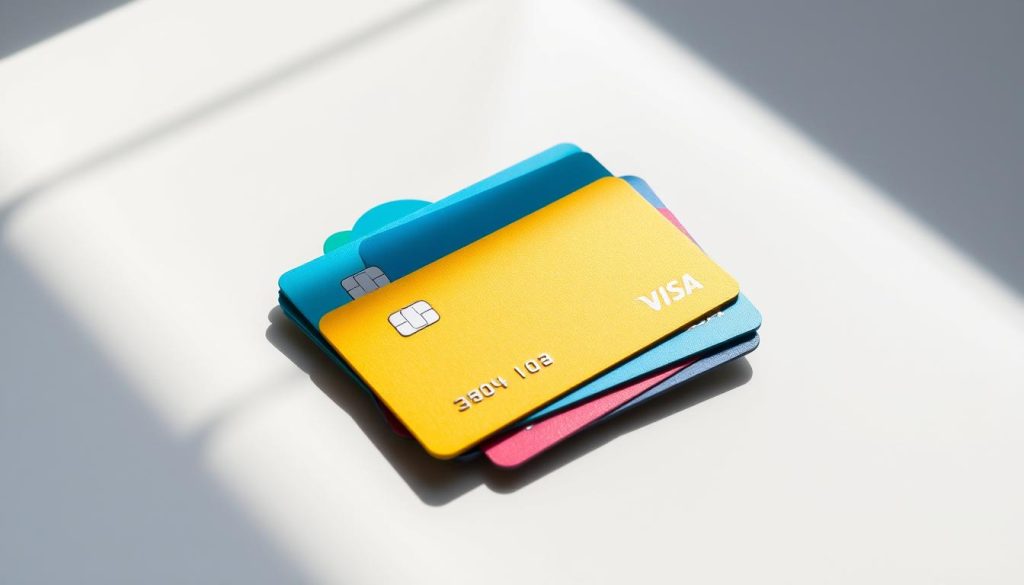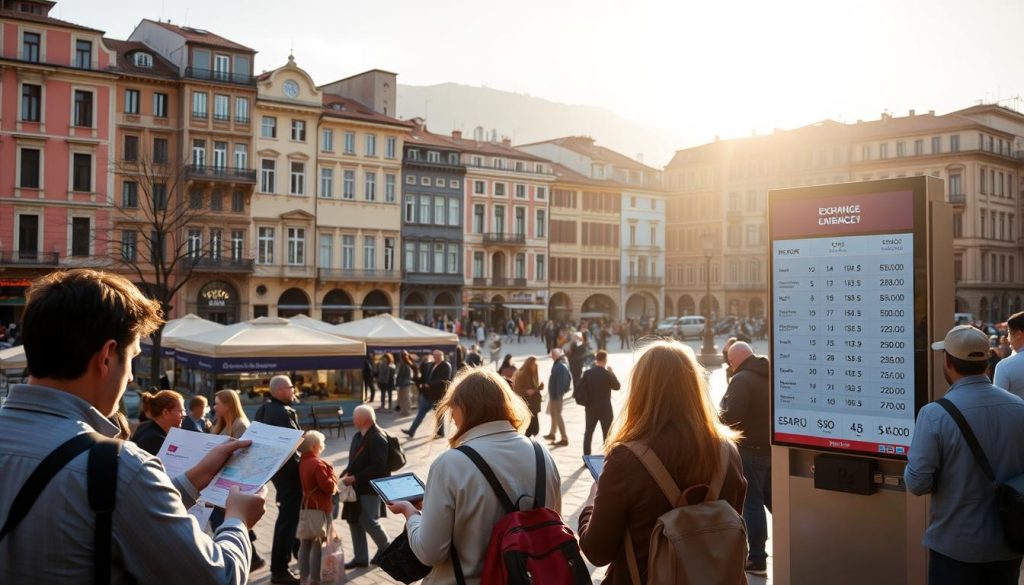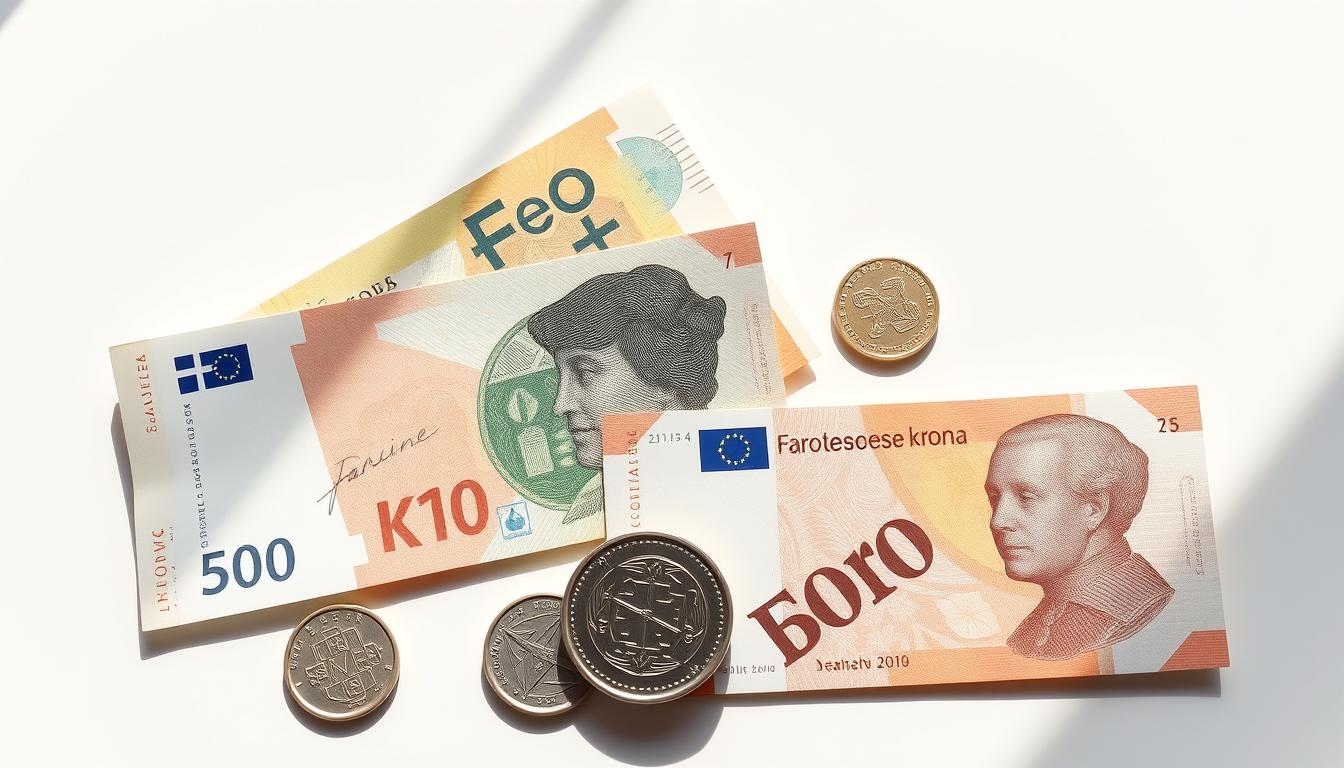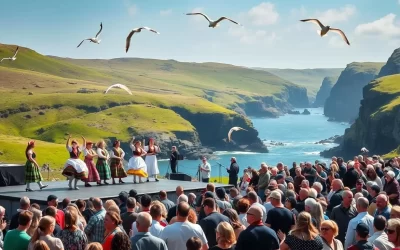Did you know that the Faroese króna is one of the few currencies in the world that isn’t controlled by its own central bank? This fascinating detail is just one of the many reasons why understanding money in this region is essential for your travel plans. Whether you’re planning a short tour or an extended stay, knowing how to navigate local payment systems can make your trip smoother and more enjoyable.
In this guide, you’ll discover everything you need to know about handling money in this picturesque location. Both the Faroese króna and the Danish krone are widely accepted, giving you flexibility in how you pay. From cash to cards and digital solutions, we’ll cover all the practical tips to ensure you’re well-prepared.
Beyond the basics, you’ll also gain insights into the cultural and historical significance of the local currency. This knowledge will not only help you manage your finances but also deepen your appreciation for the destination. Ready to dive in? Let’s get started!
Introduction to the Faroe Islands and Currency Essentials
Discover a destination that blends natural beauty with modern convenience. When you visit faroe islands, you’ll find yourself surrounded by stunning landscapes and a welcoming culture. But to make the most of your trip, it’s essential to understand the local currency system.
Here, both the Faroese króna and the Danish krone are widely accepted. Whether you’re dining at a restaurant or booking a hotel, you’ll have the flexibility to use either currency. This dual usage simplifies transactions and ensures a hassle-free experience.
The islands also offer a modern payment infrastructure. ATMs and banks are readily available, making it easy to access cash when needed. This blend of traditional charm and contemporary convenience ensures that your financial needs are well-covered during your stay.
Understanding these currency essentials not only helps you manage your budget but also enhances your overall travel experience. With this knowledge, you’re ready to explore the islands with confidence and ease.
Understanding the Faroese Króna and Danish Krone: History and Cultural Significance, Design and Denomination Details
Banknotes in this region are more than just currency—they’re a celebration of local heritage. The Faroese króna, introduced in 1940, reflects the cultural pride and history of this unique country. While it’s pegged to the Danish krone, its design tells a story of its own.
History and Cultural Significance
The Faroese króna was created during a time of economic independence, symbolizing the region’s resilience. Its close ties to the Danish krone highlight the historical relationship between the two regions. This connection ensures stability while allowing the Faroese to maintain their cultural identity.
Banknotes feature iconic landmarks like Klaksvík and natural imagery, showcasing the beauty of the islands. These designs are not just functional—they’re a tribute to the land and its people. Each note carries a piece of the region’s story, making them a unique part of the local experience.
Design and Denomination Details
The Faroese króna comes in five denominations: 50, 100, 200, 500, and 1,000 kr. Each banknote is a work of art, featuring detailed illustrations of local landmarks and natural scenes. These designs are a testament to the region’s rich heritage and pride in its identity.
While the banknotes are locally designed, the coins are identical to Danish denominations. This blend of tradition and practicality ensures seamless transactions across the country. Whether you’re holding a 50 kr note or a 1,000 kr note, you’re carrying a piece of Faroese culture in your hands.
Why Cash is No Longer King on Your Island Adventure
Cash is no longer the primary way to pay during your island adventure. Modern payment methods have taken over, making it easier and more convenient to handle transactions. Whether you’re dining at a local restaurant or buying souvenirs, cards and digital solutions are widely accepted.
Carrying cash is becoming less practical. With ATMs readily available and most establishments accepting cards, you’ll rarely need to rely on physical money. This shift not only simplifies your travel but also enhances your overall experience.

Even small transactions, like leaving a tip, can be seamlessly handled with cards. Many places now offer contactless payment options, ensuring quick and secure transactions. This convenience allows you to focus more on enjoying your trip and less on managing your finances.
Here’s a quick comparison of payment methods:
| Payment Method | Convenience | Accessibility |
|---|---|---|
| Cash | Limited | ATMs available |
| Card | High | Widely accepted |
| Digital Payments | Very High | Growing in popularity |
By embracing digital payments, you’ll find that your travel becomes smoother and more efficient. This modern approach ensures that you’re always prepared, no matter where your adventure takes you.
Credit Cards and Digital Payments: A Traveler’s Best Friend
When exploring new destinations, having the right payment methods can make all the difference. In the Faroe Islands, credit cards and digital payments have become the norm, offering convenience and security for every travel experience.
Major credit cards like Visa and Mastercard are widely accepted. Whether you’re dining at a local restaurant, shopping for souvenirs, or hailing a taxi, you’ll find that cards are the preferred payment method. This shift to cashless transactions simplifies your journey and ensures you’re always prepared.
Using credit cards also enhances your experience with added security. Fraud protection and real-time transaction monitoring give you peace of mind. Plus, digital payments eliminate the need to carry large amounts of cash, reducing the risk of loss or theft.
Here’s a quick overview of everyday transactions where cards are accepted:
| Transaction Type | Payment Method |
|---|---|
| Dining | Credit Card |
| Shopping | Digital Wallet |
| Transportation | Contactless Card |
To prepare for a cashless trip, notify your bank of your travel dates and ensure your card has no foreign transaction fees. With these tips, you’ll enjoy a seamless and stress-free travel experience.
Money Exchange and ATM Accessibility: Key ATM Locations in Tórshavn and Vágar Airport, Exchanging Currency on Arrival
Managing your money efficiently starts the moment you arrive. Knowing where to access cash and how to exchange currency can save you valuable time and stress. This guide will walk you through the essentials, ensuring a smooth start to your trip.
Upon landing at Vágar Airport, you’ll find an ATM conveniently located in the terminal. This is the perfect spot to withdraw local currency before heading to your destination. In Tórshavn, the capital, another key ATM is situated near the National Football Stadium, making it easily accessible for visitors.
Exchanging your home currency into Faroese króna is straightforward. Most banks and exchange offices operate during standard business hours, typically from 9 AM to 4 PM. If you arrive outside these hours, ATMs are your best bet for quick access to cash.
Here’s a quick overview of what to expect:
- ATMs are available 24/7 at Vágar Airport and in central Tórshavn.
- Currency exchange services are efficient, with minimal waiting time during peak hours.
- Most ATMs accept international cards, but it’s wise to check for any potential fees.
By planning ahead, you can ensure that your financial needs are met from the moment you step off the plane. This practical approach lets you focus on enjoying your visit faroe without unnecessary delays.
Local Currency Design and Cultural Identity
The design of a country’s currency often tells a story about its people and heritage. In the Faroe Islands, banknotes are more than just a means of exchange—they’re a celebration of local culture and pride. Each note features iconic landmarks and natural imagery, creating a visual narrative of the region’s identity.

Historical insights reveal that the imagery on these banknotes is carefully chosen to reflect the islands’ rich heritage. From the rugged cliffs to the quaint villages, every detail is a tribute to the land and its people. This blend of artistry and history makes the currency a unique part of the local experience.
Even in everyday transactions, the cultural significance of the currency shines through. When you visit a local restaurant, you’ll notice how the design of the money enhances your connection to the place. It’s not just about paying for a meal—it’s about appreciating the story behind the banknote in your hand.
Here’s a quick look at how currency design reflects cultural identity:
| Design Element | Cultural Significance |
|---|---|
| Natural Landmarks | Showcases the islands’ breathtaking landscapes |
| Historical Imagery | Highlights the region’s resilience and pride |
| Local Symbols | Connects people to their heritage |
By understanding the artistry behind the currency, you gain a deeper appreciation for the country and its people. This connection enriches your travel experience, making every transaction a moment of cultural discovery.
Practical Money Handling Tips for Your Trip
Handling money efficiently is key to a stress-free journey. When you visit faroe islands, knowing how to manage your finances can make all the difference. Here are some practical tips to ensure you’re prepared for any situation.
Modern payment methods like credit cards and digital wallets are widely accepted. They save you time and hassle, especially in remote areas. However, it’s wise to carry a small amount of cash for tips and local food stalls that may not accept cards.
ATMs are conveniently located in key areas like Tórshavn and Vágar Airport. Use them to withdraw local currency when needed. Always notify your bank of your travel dates to avoid any issues with card transactions.
Here’s a quick guide to managing your money effectively:
| Payment Method | Best Use Case |
|---|---|
| Cash | Tips, small vendors, and food stalls |
| Credit Card | Restaurants, hotels, and major shops |
| Digital Wallet | Contactless payments and convenience |
By following these tips, you’ll ensure that your trip is smooth and stress-free. Whether you’re exploring the island or enjoying local cuisine, smart financial planning will enhance your experience.
Navigating the Banking System While Traveling
Navigating the banking system in a new destination can feel overwhelming, but it doesn’t have to be. When you visit faroe islands, understanding how to manage your money ensures a smooth and stress-free travel experience. From ATMs to digital payments, the system is designed to be traveler-friendly.
ATMs are conveniently located in major towns like Tórshavn and near Vágar Airport. These machines are accessible outside regular banking hours, making it easy to withdraw cash whenever needed. Whether you’re renting a car or hailing a taxi, having local currency on hand simplifies transactions.
For those on a guided tour, managing your funds is equally straightforward. Most tour operators accept card payments, and ATMs are strategically placed near popular attractions. This ensures you’re never left without access to money, even during after-hours.
Here’s a quick guide to handling your banking needs:
- Use ATMs in major towns for quick cash access.
- Notify your bank of your travel dates to avoid transaction issues.
- Carry a mix of cash and cards for flexibility.
- Plan ahead to ensure your financial needs are met, even in remote areas.
By following these tips, you’ll find that the local banking system is both accessible and efficient. Whether you’re exploring the islands or enjoying a guided tour, managing your money will be the least of your worries.
Preparing for Currency Transactions on the Go
Staying prepared for financial transactions ensures a smoother travel experience. Whether you’re exploring the island or visiting local shops, knowing how to handle money efficiently saves you time and stress. Most places accept cards, so carrying less cash is advisable. This approach keeps your trip hassle-free and allows you to focus on enjoying your visit faroe.
Planning ahead is key. Use apps to monitor exchange rates and avoid unnecessary fees. Notify your bank of your travel dates to prevent card issues. These small steps make a big difference in managing your money effectively.
Here’s how to balance your payment methods:
- Use cards for most transactions—they’re widely accepted and secure.
- Carry a small amount of cash for tips or small vendors.
- Leverage digital wallets for quick and contactless payments.
By following these tips, you’ll feel confident handling financial exchanges anywhere. Whether you’re dining out or shopping, smart planning ensures your trip is smooth and stress-free.
Faroe Islands: Ultimate Travelers Guide to Currencies & Payments
Understanding local currencies is a cornerstone of any successful trip. Whether you’re visiting for business or leisure, knowing how to handle money ensures a smooth and enjoyable experience. This guide has covered everything you need to navigate the financial landscape of this unique destination.
Both the Faroese króna and Danish krone are widely accepted, giving you flexibility in how you pay. From cash to cards and digital solutions, the islands offer a modern payment infrastructure. This dual currency system simplifies transactions and ensures you’re always prepared.
- Use cards for most transactions—they’re widely accepted and secure.
- Carry a small amount of cash for tips or small vendors.
- ATMs are conveniently located in major towns and at Vágar Airport.
- Notify your bank of your travel dates to avoid transaction issues.
By following these tips, you’ll ensure your financial needs are met throughout your journey. Whether you’re dining at a local restaurant or exploring remote areas, smart planning keeps your travel stress-free.
| Payment Method | Best Use Case |
|---|---|
| Cash | Tips, small vendors, and food stalls |
| Credit Card | Restaurants, hotels, and major shops |
| Digital Wallet | Contactless payments and convenience |
With this guide, you’re ready to handle money confidently during your travel. Whether you’re a first-time visitor or a seasoned explorer, these insights ensure a seamless and enjoyable experience.
Comparing Payment Methods: Cash, Card, and Mobile Solutions
Choosing the right payment method can make your trip smoother and more enjoyable. Whether you’re dining at a restaurant or catching a taxi, understanding your options ensures you’re always prepared. Here’s a detailed comparison of cash, card, and mobile payments to help you decide what works best for your needs.
Cash is still useful for small transactions, like tipping or shopping at local markets. However, carrying large amounts can be inconvenient and risky. In remote areas, cash might be your only option, so it’s wise to keep some on hand.
Credit and debit cards are widely accepted, especially in tourist areas. They’re secure, convenient, and eliminate the need to carry cash. Most restaurants, hotels, and shops accept major cards like Visa and Mastercard. Plus, cards offer fraud protection, giving you peace of mind.
Mobile payments are growing in popularity, offering speed and convenience. Services like Apple Pay and Google Pay are accepted in many places, allowing for quick, contactless transactions. However, availability may vary, so it’s good to have a backup plan.
Here’s a quick guide to choosing the best method for different scenarios:
- Use cards for most transactions—they’re widely accepted and secure.
- Carry a small amount of cash for tips or small vendors.
- Opt for mobile payments when speed and convenience are key.
By understanding these options, you’ll save time and avoid unnecessary stress during your visit faroe. Whether you’re exploring the islands or enjoying local cuisine, smart payment planning ensures a seamless experience.
Using Prepaid Travel Cards to Save on Fees: Advantages Over Traditional Banking
Prepaid travel cards are revolutionizing how you manage your funds abroad. These cards offer a cost-effective way to handle your money, especially when you’re exploring new destinations like the faroe islands. With lower fees and multi-currency options, they’re a smart choice for savvy travelers.
One of the biggest advantages is avoiding hidden fees. Traditional banks often charge high conversion rates and transaction fees. Prepaid cards like Revolut and Wise let you hold multiple currencies, ensuring you get the best exchange rates. This saves you money on every transaction.

These cards are also incredibly convenient. Whether you’re booking a hotel or renting a car, prepaid cards are widely accepted. They eliminate the need to carry large amounts of cash, reducing the risk of loss or theft. Plus, they offer an extra layer of security with features like fraud protection.
Here’s why prepaid travel cards stand out:
- Lower fees compared to traditional banking.
- Multi-currency balances for seamless transactions.
- Enhanced security with real-time monitoring.
- Convenience for everyday travel expenses.
By using prepaid travel cards, you can focus on enjoying your trip without worrying about financial hassles. They’re a practical and secure way to manage your money abroad.
Safety and Security: Handling Cash and Cards Abroad
Traveling with confidence means knowing how to protect your cash and cards. The faroe islands are known for their low crime rates, making it a safe destination for managing your money. However, staying informed and cautious ensures your financial security throughout your trip.
When using ATMs, choose machines located in well-lit, secure areas. Always shield your PIN and avoid sharing it with anyone. Monitoring your transactions by the hour helps you spot any unusual activity quickly. Most banks offer mobile apps for real-time updates, adding an extra layer of protection.
While dining out or enjoying local food, keep your valuables close. Use a money belt or hidden pouch to store your cash and cards. Avoid displaying large amounts of money in public, as this can attract unwanted attention.
Here are some practical tips to keep your finances secure:
- Notify your bank of your travel dates to avoid card issues.
- Carry only the amount of cash you need for the day.
- Use RFID-blocking wallets to protect your cards from skimming.
- Keep a backup card in a separate location in case of loss or theft.
By following these guidelines, you’ll enjoy a worry-free trip. Whether you’re exploring the islands or savoring local cuisine, smart financial planning ensures your money stays safe and secure.
Payment Options on Remote Islands and in Small Villages
Exploring remote areas often requires a bit more planning, especially when it comes to handling money. While modern payment methods are becoming more common, some small villages may still rely on cash. Being prepared ensures a smooth and stress-free experience.
In most remote locations, you’ll find that cards are widely accepted. However, carrying a small amount of cash is a smart backup. This is particularly useful for small vendors or local markets that may not have card terminals. Planning ahead saves you from unexpected challenges.
- Use cards for most transactions—they’re secure and widely accepted.
- Carry cash for small purchases or in case of limited card access.
- Check for local payment habits to avoid surprises.
For example, when visiting a small village, you might find that a local café only accepts cash. In such cases, having a small reserve ensures you can still enjoy the experience. Similarly, ferry rides or toll payments may require cash, so it’s good to be prepared.
Here’s a comparison of payment methods in remote areas:
| Payment Method | Best Use Case |
|---|---|
| Cash | Small vendors, local markets, and tolls |
| Card | Restaurants, hotels, and major shops |
| Digital Wallet | Contactless payments where available |
By understanding these options, you’ll navigate remote areas with ease. Whether you’re exploring a secluded village or enjoying the natural beauty of the country, smart financial planning enhances your travel experience.
Managing Currency Exchange Rates During Your Journey
Keeping an eye on exchange rates can make a big difference in how you manage your money while traveling. Even small fluctuations can impact your overall spending, so it’s essential to stay informed. By tracking rates and timing your exchanges wisely, you can maximize your spending power and make the most of your trip.
The Faroese króna is tied to the Danish krone, which is indirectly linked to the Euro. This connection ensures stable exchange rates, but it’s still important to monitor them. Using reliable tools like XE Currency Converter or TransferWise can help you stay updated in real-time. These platforms provide historical data, allowing you to spot trends and make informed decisions.

- Check rates daily to identify the best time to exchange your currency.
- Use apps with alerts to notify you of significant rate changes.
- Avoid exchanging large amounts at airports or tourist hubs, where rates are often less favorable.
- Consider multi-currency accounts for flexibility and better rates.
Understanding how exchange rates work can save you money and reduce stress during your visit faroe. For example, if the króna strengthens against your home currency, you’ll get more value for your money. Conversely, if it weakens, you might want to delay large purchases or exchanges.
Here’s a comparison of popular exchange rate tracking tools:
| Tool | Features | Best For |
|---|---|---|
| XE Currency Converter | Real-time rates, historical data | Daily tracking |
| TransferWise | Multi-currency accounts, low fees | Frequent travelers |
| OANDA | Customizable alerts, detailed charts | In-depth analysis |
By following these strategies, you’ll be well-equipped to handle currency exchanges with confidence. Whether you’re planning your budget or making on-the-spot decisions, smart rate management ensures a smoother and more enjoyable journey.
Conclusion
Planning your finances doesn’t have to be stressful—especially when you’re well-prepared. Whether you’re using cash, cards, or digital payments, your trip to the Faroe Islands can be seamless and enjoyable. With modern payment options widely available, you’ll find it easy to manage your money wherever you go.
From dining at a local hotel to exploring remote villages, the flexibility of payment methods ensures you’re always ready. Remember to carry a mix of cash and cards for convenience. This way, you can focus on making the most of your experience without worrying about financial hassles.
As you prepare for your visit faroe islands, keep these tips in mind. Embrace the ease of modern transactions and enjoy every hour of your adventure. Safe travels, and don’t forget to share your stories when you return!
The above is subject to change.
Check back often to TRAVEL.COM for the latest travel tips and deals.
Here are some Tours & Sightseeing suggestions that might pique your interests!





